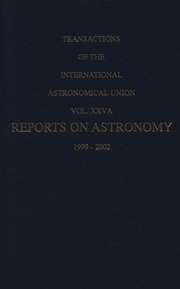No CrossRef data available.
Article contents
13. Commission Des Eclipses De Soleil
Published online by Cambridge University Press: 25 April 2016
Extract
Since the date of the 1938 Stockholm meeting, there has been vast progress from eclipses both on the observational and the theoretical sides. In the interval there have been five total eclipses: 1940, October 1; 1941, September 21; 1944, January 25; 1945, July 9; and 1947, May 20. In spite of the war and of the ever-present enemy of eclipse observers, clouds, valuable observations were secured from each of the five eclipses.
It is becoming increasingly difficult to draw a line of delimitation between the work of Commission 13 (Eclipses) and of Commission 11 (Chromospheric Phenomena) and Commission 12 (Solar Radiation and the Solar Spectrum). Spectacular developments by the use of coronagraphs at the high-altitude stations in France, in Switzerland and in the United States (Harvard Station at 11,532 ft.) and also by the improved motion-picture techniques developed at the McMath-Hulbert and the Mt Wilson Observatories have made it possible for refined observations of prominences and of the corona to be made outside of a total eclipse.
- Type
- Part III. Rapports et Comptes rendus
- Information
- Copyright
- Copyright © Cambridge University Press 1950


